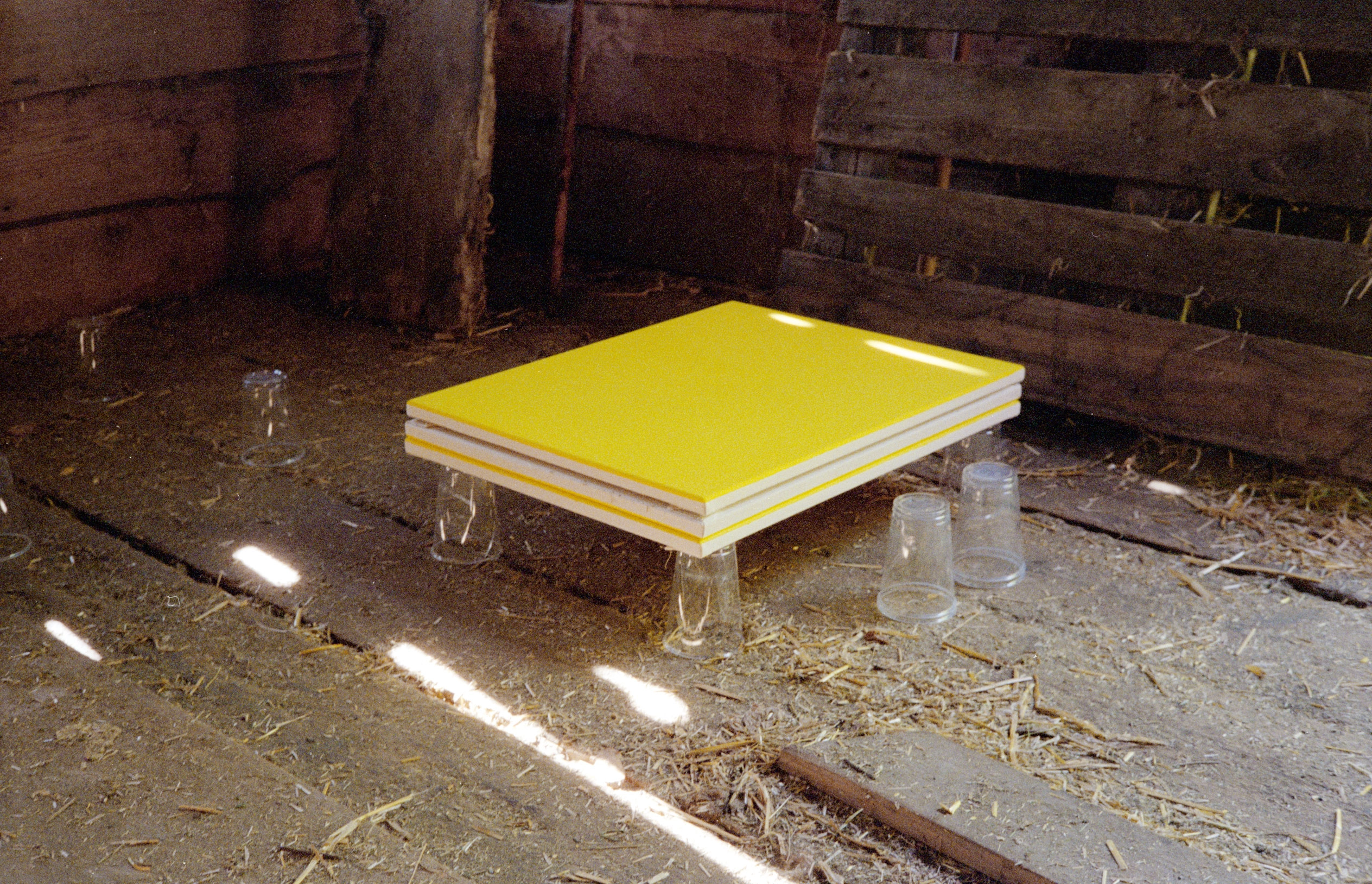Bruno Jakob is a painter; he is also one of the protagonists in Max Makes a Million, a picture book written and illustrated by Maira Kalman in 1990.1 It looks like a children’s book and it tells the story of Max, who is a dreamer, a poet — and a dog. He dreams of living in Paris, but as he says, that’s not so easy for a little dog from New York. How could he make a living as a poet in Paris? But if you have friends like Bruno, Max says, you can also live pretty well in New York. So there he is: Bruno! Max shares a studio with Bruno, and Bruno is his best friend. Bruno, says Max, is an artist — note that Max calls him an artist and not a painter — who paints “invisible paintings.” There are people who say that Bruno is crazy, but he tells them that Bruno is simply working on his ideas.
Years have passed since this book was published, but Bruno Jakob is still living in New York. He now wears severe, dark-framed glasses and on most days a white shirt under a dark blazer that he had tailor-made with inside pockets for the brushes, pencils, and paper that he needs for his work, no matter where he is. When you are with him, he is liable to pull up short, reach into an inside pocket and pull out a little piece of white cardboard, which he then hands to someone or holds in front of an object. That means he is painting. The materials he uses for his invisible painting include energy, water, thoughts, and touch. He concludes by noting down — for instance on the back of the piece of cardboard invested with his energy and thoughts — not only the place and date, but also the title of the work, the medium, and his signature. But how can one distinguish a thought picture from an ordinary piece of paper that is identical in appearance to the work of art? The question has not been answered, but debating it is a way of penetrating the core of Jakob’s notion of painting.
Even as a young artist, Jakob was already interested in all things invisible, hidden, latent, lost, unrealized and undepictable. He has been painting these aspects of the depictable ever since, and has never ceased picturing the world and representing ideas. What we see are thus figurative drawings or video works in which Jakob shows himself painting. He may use one hand to paint an Alpine meadow full of flowers glistening with morning dew while using the other to wield a camera and record the surroundings in which the picture is concentrated. Works of this kind capture a life moment and the simultaneity of several events, one of which may be the painting of a picture. His studio is thus the world.
Jakob worked in Amden for a week in September 2002. There he created the cycle Philosophy Energized (Still Collecting) comprising drawings, videos, paintings, and various works specific to the situation. On 8 September 2002 he had an audience while working. He had brought water along from New York that he used to “paint” a wall of the barn. His kinetic objects — bits of cardboard suspended on thread in openings in the wall — visualized the air flowing through the building. The water falling into a ravine nearby, which can be heard but not seen, acquired a visual echo in the form of clear water coming from inside the building and gently flowing down the exterior. His drawings in a sketchbook record a multitude of additional ideas, many more than could be executed within the space of a week. According to the composer John Cage, the job of the artist is not to explore himself and his own feelings but to open the eyes of others so that they may perceive unexpected worlds. This clearly applies to Jakob. As paradoxical as it sounds, his work is primarily visual, although it claims to be the opposite. His painting is neither abstract nor objective nor conceptual, and he does not invent a symbolism of his own. Instead he addresses his viewers through drawing, painting, photography, moving image, and performance — in other words always in an artistic medium whose open-ended structure encourages them to question their relationship to the visible.
The visible components of the work evince all the conventional features of visual art, making his painting credible as a consciously executed act. Jakob cannot be categorized as a conceptual artist. On the other hand, without the conceptual art of the 1960 s, his painting would be perceptible only as material but not as art. A painting worked with energy and additionally fashioned through touch will be nothing but an empty canvas. Jakob’s oeuvre therefore links conceptual art with painting through his use of invisible materials. It goes without saying that this approach provokes contradiction. According to Arthur C. Danto: “The deliberate rejection of a mode of representation implies a rejection of the whole way of relating to the world and to men.”2 In Bruno Jakob’s case, the viewer’s rejection would mean criticizing the artist for retreating behind his working method. But it would also mean doubting the structural openness of his painting and hence his painterly practice as well, which treats every single work as potential or conditional and every single picture as a resonant space for the viewer.
– Roman Kurzmeyer
- Maira Kalman, Max Makes a Million, New York / London: Viking, 1990.
- Arthur C. Danto, The Transfiguration of the Commonplace: A Philosophy of Art, Cambridge MA: Harvard University Press, 1981, p. 50.

 Images
Images
 Info
Info--2002--%C2%A9%20Eliane%20Rutishauser--001.webp)
--2002--%C2%A9%20Eliane%20Rutishauser--002.webp)
--2002--%C2%A9%20Eliane%20Rutishauser--003.webp)
--2002--%C2%A9%20Eliane%20Rutishauser--004.webp)
 Next Exhibition
Next Exhibition